
The Latest and greatest treatments for IBD: What to believe
What’s the best IBD medicine for me? Confusion on television and in your inbox....
See moresign up for our newsletter
Subscribe
Crohn's disease is a particular type of inflammation of the intestine (that can cause problems in other tissues as well). It was originally described in 1932 by Drs. Burrill Crohn, Joel Oppenheimer and Gordon Ginzburg in order to distinguish this condition from tuberculosis, since both caused inflammation at the end of the small intestine. Inflammation there was called terminal ileitis (inflammation at the end of the ileum) or regional enteritis (inflammation in a region of the intestine). Because this same type of inflammation was soon discovered to occur elsewhere in the intestine, others began referring to the condition by the name of the lead author on the paper, in the way diseases were named at the time.
The Results of Inflammation
The inflammation often shows up as ulcers, sometimes looking just like mouth ulcers (in fact, chronic, meaning long-term, mouth ulcers do occur in Crohn's). The ulcers can become deeper and larger, with swelling and irritation around them [pictures]. They then involve more than the surface layer of the intestine, indicating a more severe disease course. If the disease progresses, the swelling can become so tight, the inside of the bowel (another name for the intestine) narrows and blocks (obstructs) the flow. The narrowed area is called a stenosis. When it is there for a long time, it can form a scar, then called a stricture.
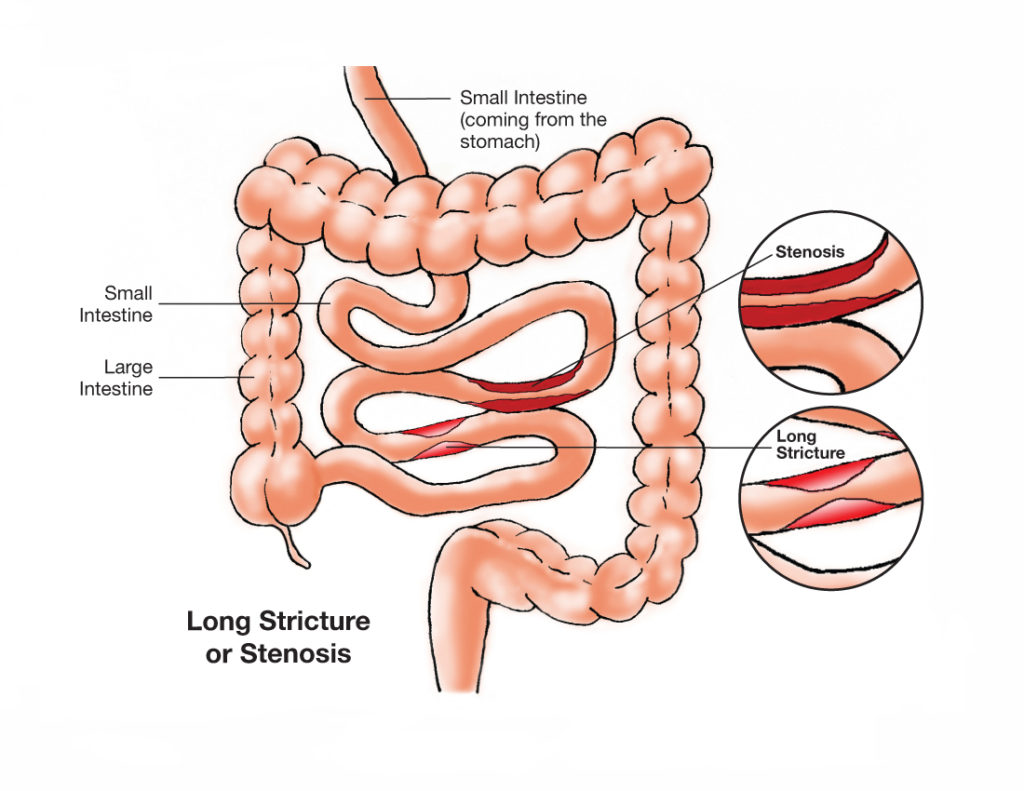
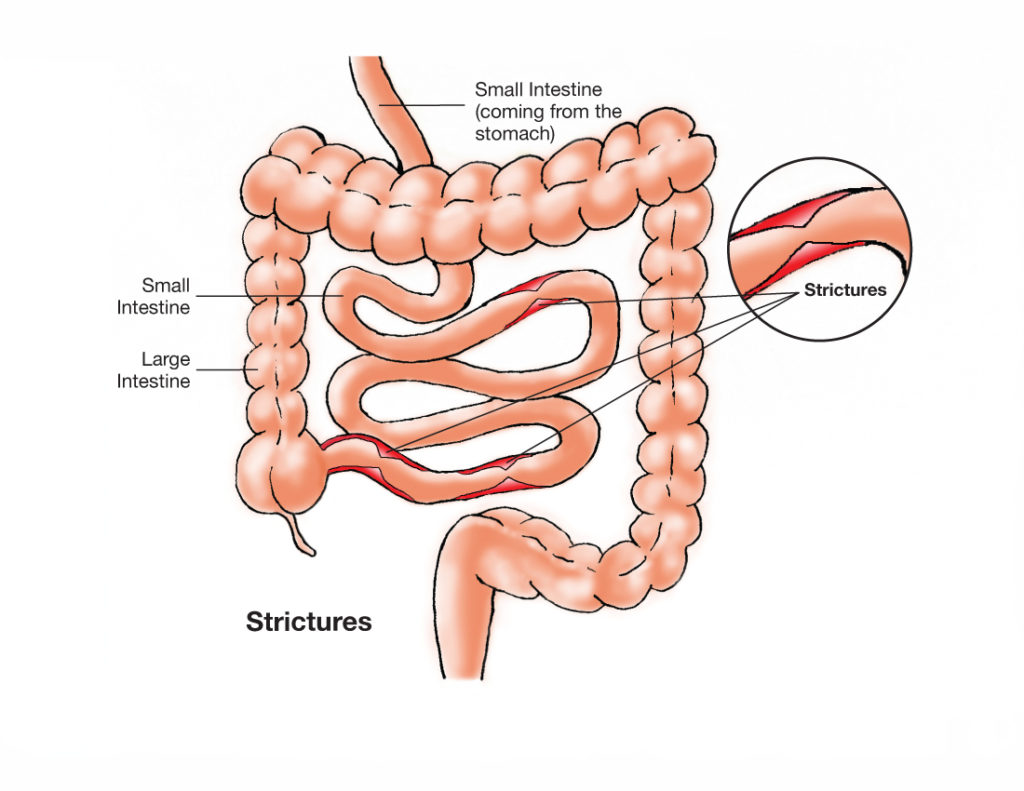
Another way Crohn's disease can progress is that tracts can form from the intestine to the skin, the bladder or other tissues. These are called fistulas.
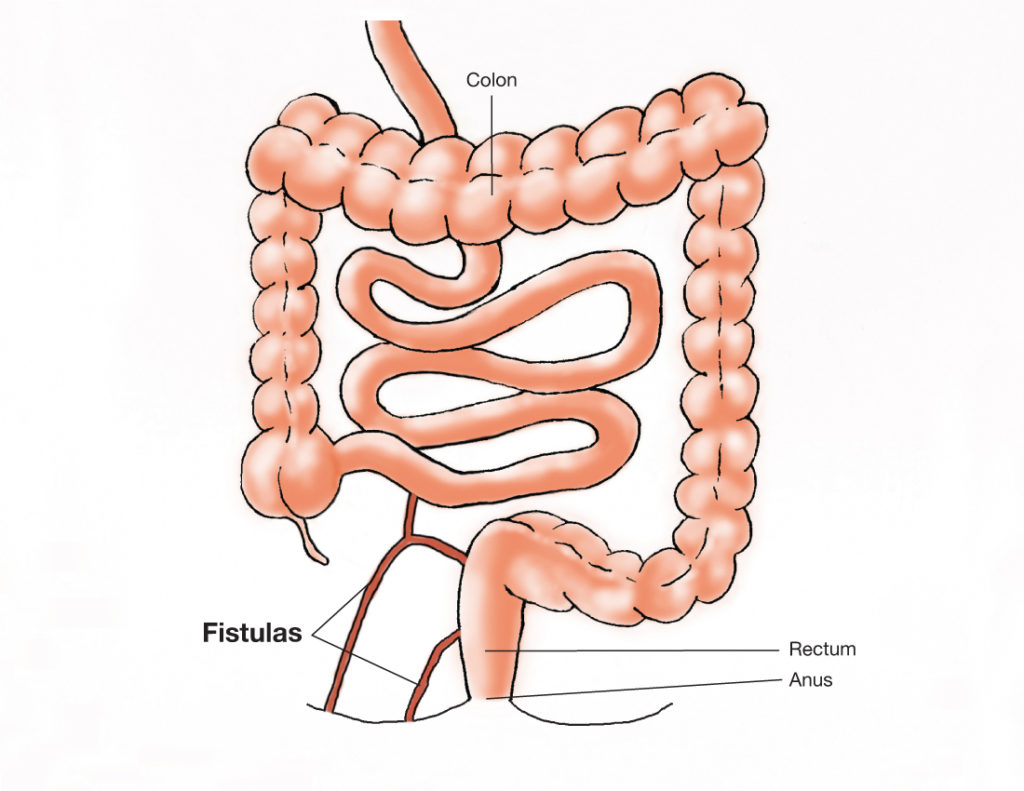
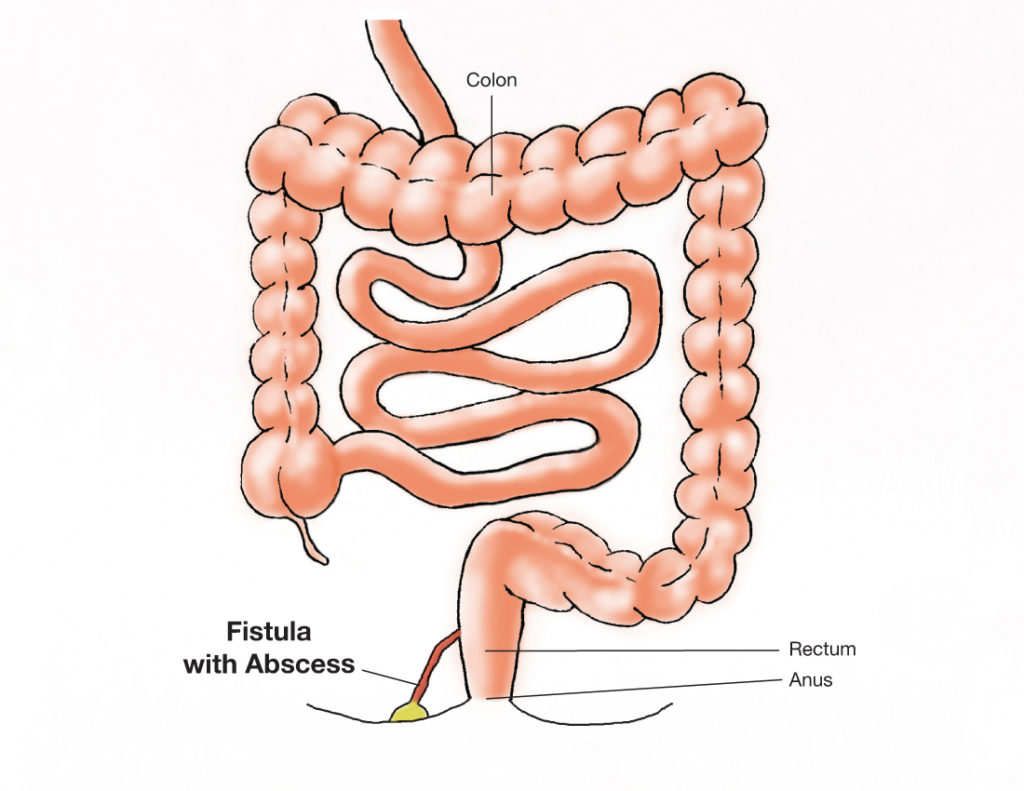
The easiest way to think of them perhaps, is that the intestinal contents are trying to find another way out, particularly if the intestine is obstructed, so they burrow through the bowel until they can exit. Sometimes when they don't find an exit other than to the inside of the abdomen (that area between the chest and hips that contains the intestines, liver, gallbladder, kidneys, bladder and the internal female organs) or one of the muscles, they create an infection, which the body seals off into a pocket called an abscess. When the infection does not get sealed off, that is called a phlegmon.
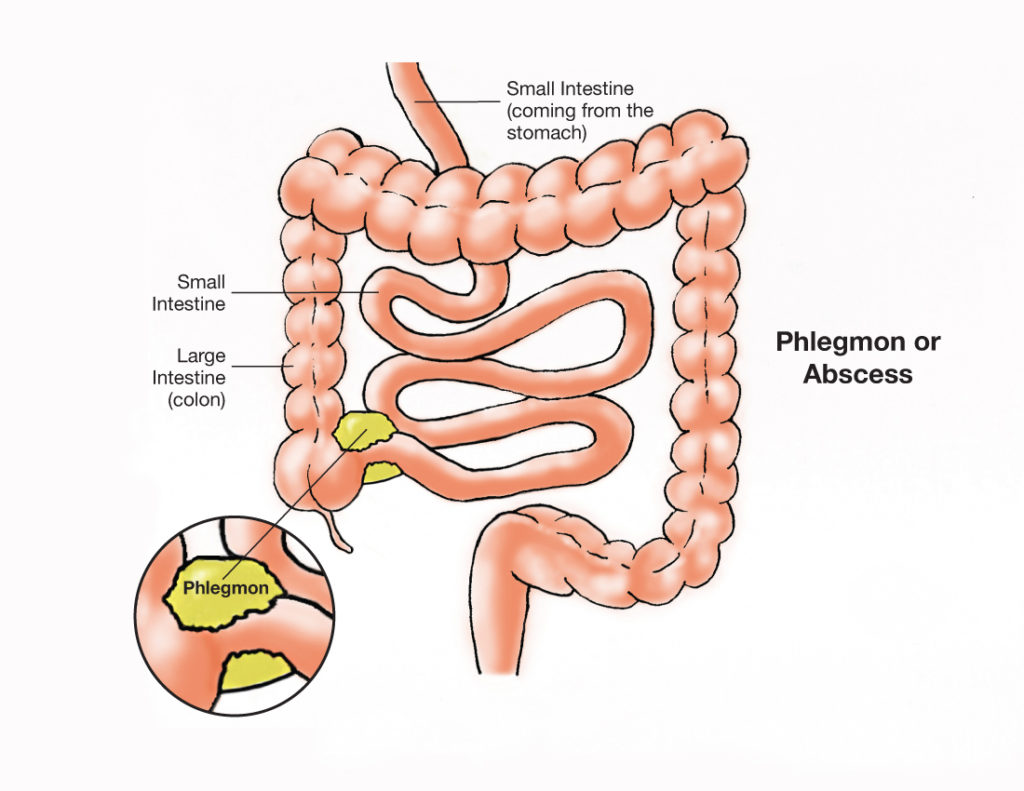
Crohn's Disease is A Bad Name
When I tell a parent that their child has (or may have) Crohn's disease, I am putting a label on that child that they carry with them, and almost immediately, they are on the internet trying to understand the problem and the best course to follow. the problem is that Crohn's disease can be very different for different individuals.
Compare it to snow for the Eskimos. They have 50 words for snow. "Aquilokoq" means softly falling snow, while "piegnartoq" means snow that is good for driving a sled. Right now, I only have "Crohn's disease," when that term should be plural–diseases, because they act differently and require different treatment.
Several classifications have helped us to understand the disease patterns in different age groups. They break out Crohn's disease by it's location and behavior (stricturing, penetrating or just inflammatory) as well as by the patient's age and whether they've had growth problems. While that has not yet been linked to evidence on how each group will do with certain treatment regimens or with the genetics and triggers leading to each form of the disease, one day soon, it should.
Crohn's Disease And Other Tissues
Patients with Crohn's disease (and ulcerative colitis) can have other problems develop in association with their bowel disease. These extra-intestinal manifestations can include the joints, the skin, the liver, and other tissues. Sometimes, they can even occur before intestinal symptoms develop.
A Cure and Treatment For Crohn's Disease
At the present time, there is no cure for Crohn's disease. Even removing the involved areas does not prevent Crohn's from returning. While surgery sometimes becomes necessary to get the disease under control, diet and one (or more) of the many medicines are usually preferred to lessen symptoms, to help heal the intestine, and in children to restore growth.
This article, as well as all others, was reviewed and edited by a member of our Medical Advisory Board.
Subscribe Be the first to know